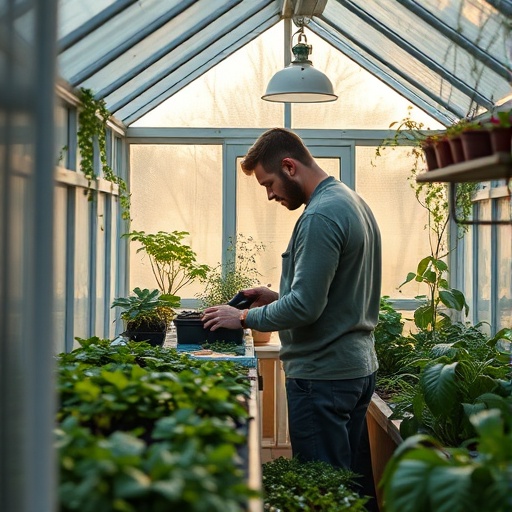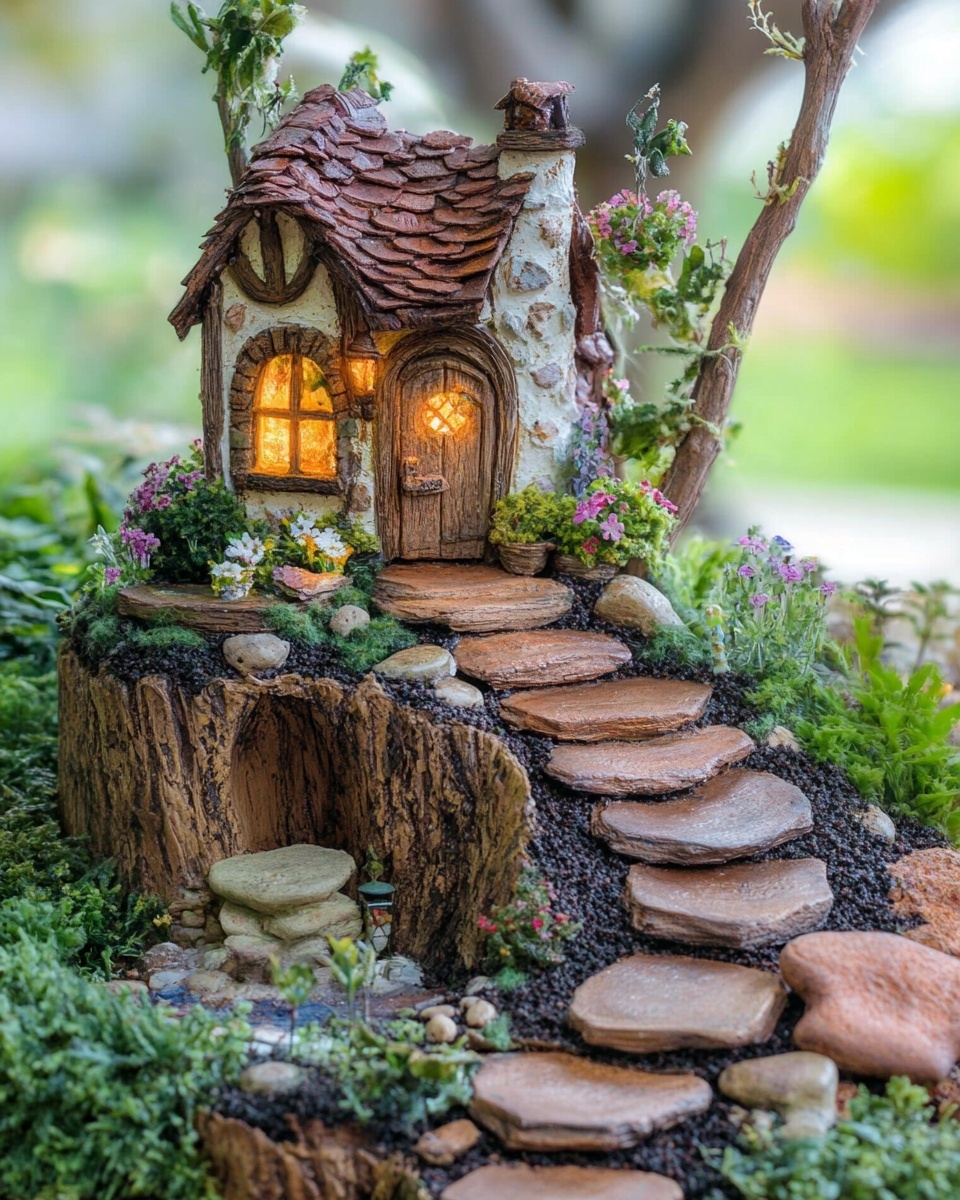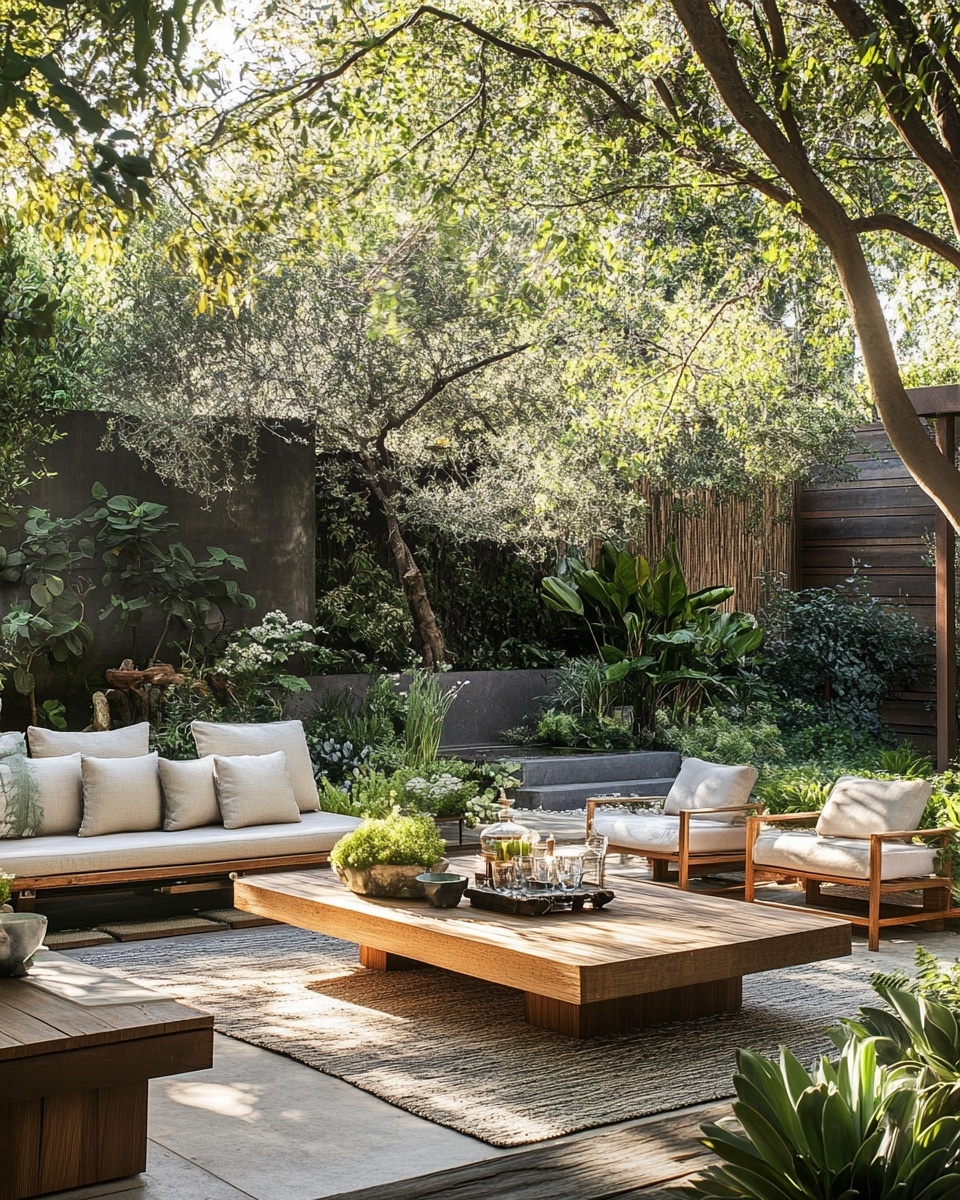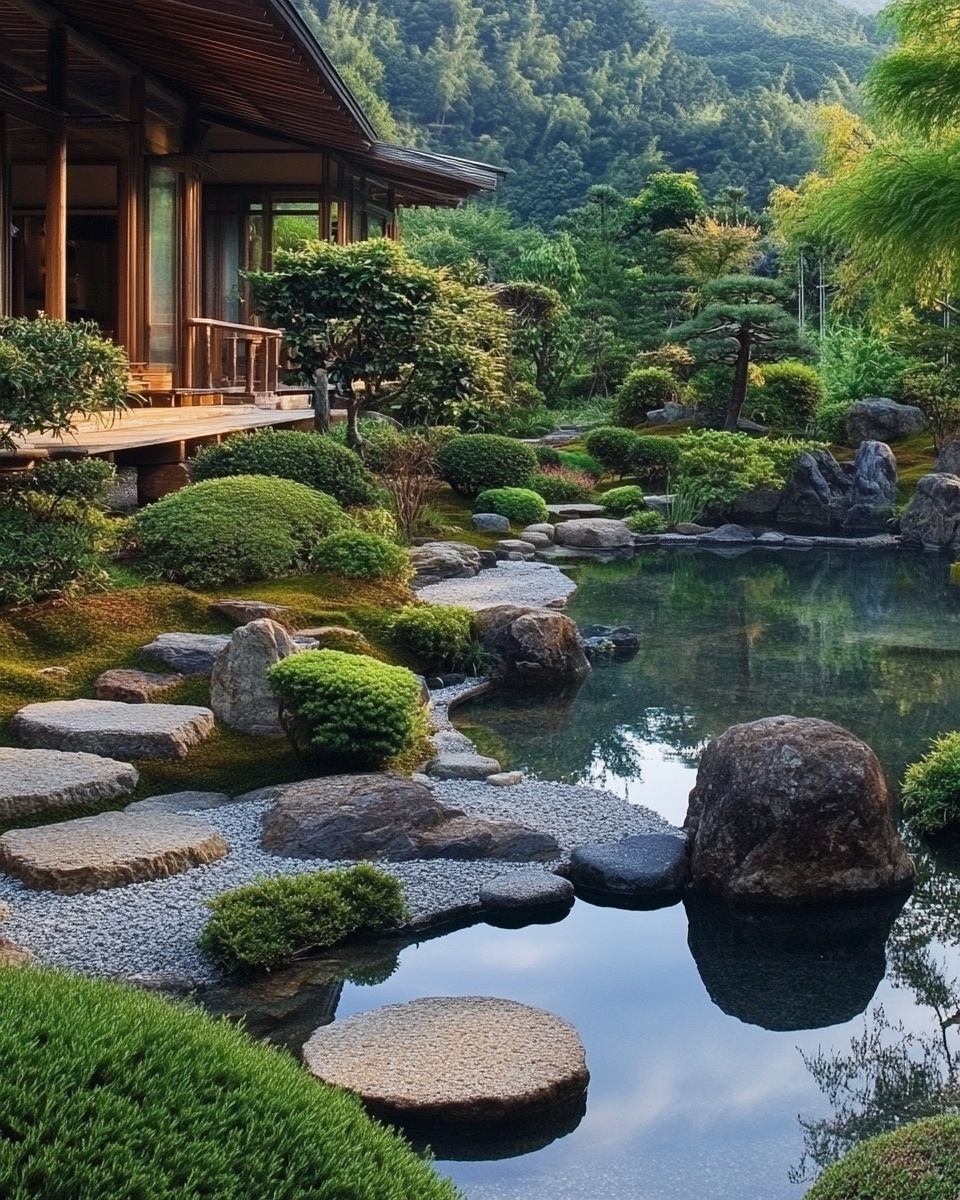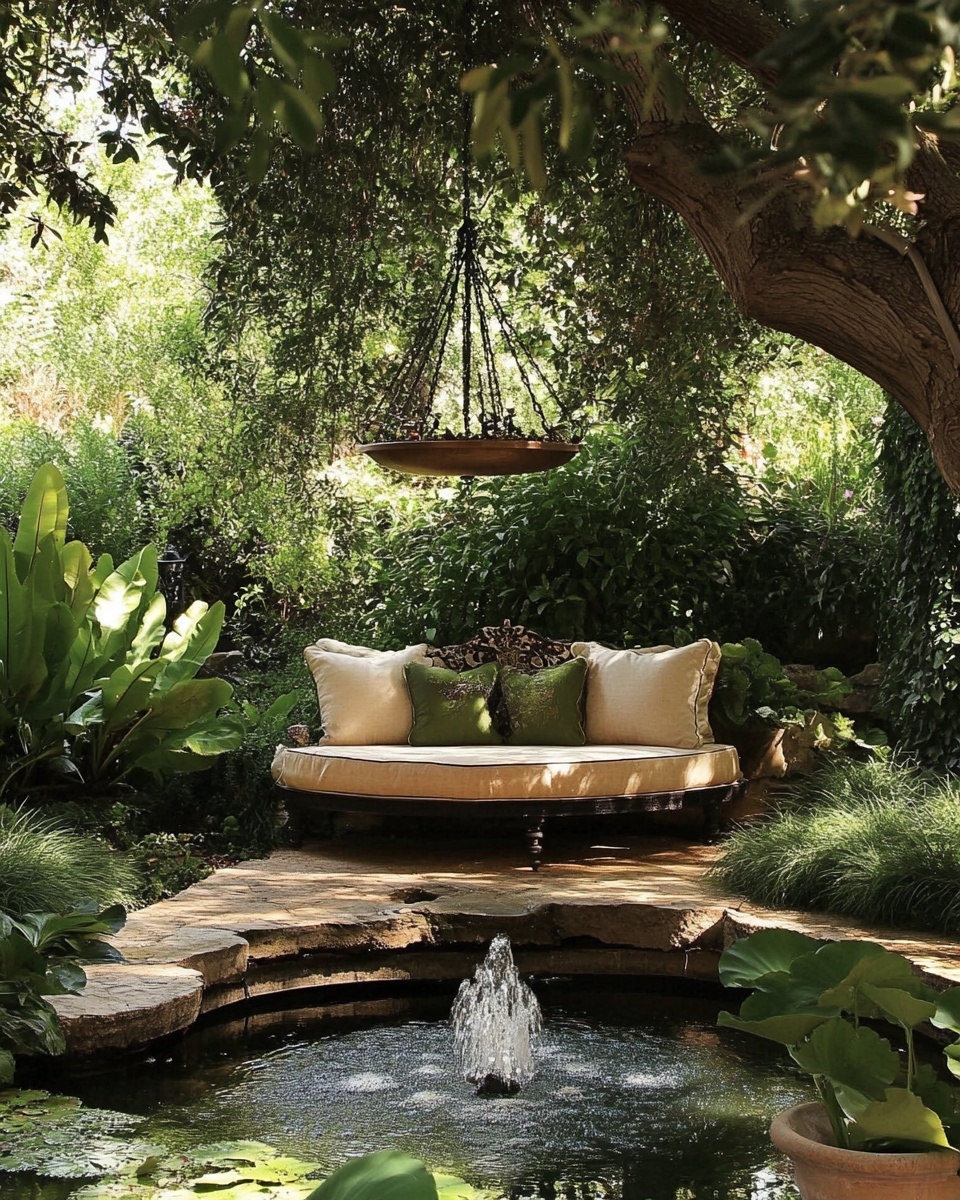Introduction
Did you know that investing just 30 minutes a day in specific indoor gardening techniques can yield fresh produce all year round, even when temperatures outside plummet to single digits? Many aspiring green thumbs believe that the joys of cultivating a garden are strictly seasonal, a luxury reserved for the warmer months. But what if we told you that the vibrant world of gardening doesn't have to hibernate? With a little knowledge and the right setup, you can transform your home into a verdant oasis, extending the growing season indefinitely. This guide will delve into the transformative power of a greenhouse, helping you master the art of winter gardening and beyond, all while challenging the conventional wisdom of seasonal limitations.
Tools & Materials Needed
Embarking on your greenhouse gardening adventure means gathering the right arsenal. Think of it as preparing for a delicious culinary conquest – you wouldn’t start without the right ingredients and utensils! Here’s a detailed list to get you started, along with some eco-friendly and budget-conscious alternatives.
- Greenhouse Structure: This is your primary investment. Options range from small, portable cold frames for tight spaces to elaborate polycarbonate or glass structures. For beginners, a mini walk-in greenhouse (around 6×8 feet) made from twin-wall polycarbonate offers excellent insulation and durability without breaking the bank.
- Growing Medium:
- Seed Starting Mix: A fine-textured, sterile mix crucial for germinating seeds effectively. Look for mixes rich in coco coir or peat moss for excellent moisture retention.
- Potting Mix: For transplanting seedlings and growing mature plants in containers. A good all-purpose organic potting mix provides essential nutrients and drainage. For an eco-friendly option, consider making your own by blending compost, perlite, and a touch of kelp meal.
- Containers:
- Seed Trays & Cells: Essential for starting multiple seeds efficiently. Reusable plastic trays are durable, but biodegradable pots made from coir or peat are excellent eco-alternatives, allowing for direct transplanting without disturbing roots.
- Pots & Grow Bags: Various sizes for different plants. Fabric grow bags promote air pruning, preventing root circling, and are a sustainable choice.
- Seeds/Starts: Choose varieties suited for greenhouse growing, especially if focusing on winter gardening. Research cold-hardy greens (spinach, kale), root vegetables (carrots, radishes), and herbs. Consider heirloom seeds for genetic diversity and often superior flavor.
- Watering System:
- Watering Can: A simple, precise tool for seedlings.
- Hose with a Gentle Nozzle: For larger plants.
- Rain Barrel: An excellent eco-friendly way to collect and store rainwater, reducing water consumption.
- Temperature & Humidity Control:
- Thermometer/Hygrometer: Crucial for monitoring. Digital models are often more accurate.
- Ventilation: Vents (manual or automatic) are essential. Small clip-on fans aid air circulation, preventing fungal diseases.
- Heater (Optional for very cold climates): A small electric heater with a thermostat can be vital for consistent temperatures during deep winter gardening.
- Hand Tools:
- Hand Trowel & Cultivator: For planting and light soil work.
- Pruning Shears: Essential for maintaining plant health and encouraging bushier growth.
- Lighting (Supplemental, if needed):
- LED Grow Lights: While greenhouses harness natural light, short winter days might require supplemental LED grow lights, especially for fruiting plants. Full-spectrum LEDs are energy-efficient.
- Labels & Markers: An often-overlooked but crucial tool for identifying your plant babies!
Time & Effort Overview
Greenhouse gardening, particularly for winter gardening, offers a surprisingly efficient use of your time, yielding continuous harvests that far outweigh the initial setup.
- Initial Setup: Depending on the greenhouse size, this can range from 2-4 hours for a mini-greenhouse to a full weekend for a larger, more structured build.
- Planting: Seed starting takes about 1-2 hours per batch of seeds. Transplanting seedlings might require another hour or two, depending on the number of plants.
- Daily Maintenance: Dedicate just 15-30 minutes daily for essential tasks like watering, checking temperatures, and observing plants for pests or diseases. This proactive approach prevents bigger issues down the line. Studies suggest that consistent, brief daily checks reduce overall maintenance time by up to 40% compared to sporadic, longer sessions.
- Weekly Maintenance: Around 1-2 hours for more intensive tasks like pruning, fertilizing, and harvesting.
- Harvest Time: Many greens, like spinach and lettuce, are ready for a first harvest in as little as 3-4 weeks. This is significantly faster than many outdoor garden varieties, which often take 6-8 weeks for a substantial yield. For example, greenhouse-grown radishes can be ready in 25 days, growing 30% faster than typical outdoor-grown varieties due to optimized conditions.
- Difficulty Level: Beginner-Intermediate. While the initial learning curve involves understanding ideal greenhouse conditions, the controlled environment often makes it easier to succeed than outdoor gardening, especially for delicate crops.
Step-by-Step Gardening Process
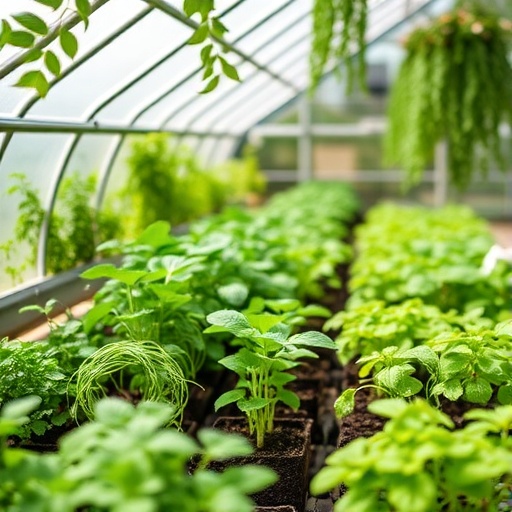
Ready to get your hands dirty? Let's walk through the enchanting journey of establishing your greenhouse haven.
Step 1: Site Selection and Greenhouse Assembly
Choose a location that receives maximum sunlight, ideally facing south, and is protected from strong winds. Ensure good drainage. Follow your greenhouse kit’s instructions carefully for assembly. Double-check all seals and vents for proper installation – small gaps can lead to significant heat loss during winter gardening.
Step 2: Prepare Your Growing Medium
Fill your seed trays or pots with a high-quality seed starting mix (for seeds) or potting mix (for transplants). Lightly dampen the mix before planting. This ensures even moisture distribution.
Step 3: Seed Sowing or Transplanting Seedlings
For Seeds: Create small depressions according to seed packet instructions. Place 2-3 seeds per cell/pot to account for germination rates. Cover lightly with soil.
For Seedlings: Gently remove seedlings from their original containers. Handle them by their leaves, not stems, to avoid damage. Plant them into their new, larger pots at the same depth they were previously.
Step 4: Initial Watering
After planting, water gently using a fine mist or a watering can with a rose attachment. Aim for even saturation without dislodging seeds or disturbing tender roots.
Step 5: Optimal Placement and Environmental Control
Place your trays or pots in an area of the greenhouse where they’ll receive adequate light. Immediately set up your thermometer/hygrometer. Aim for daytime temperatures between 65-75°F (18-24°C) and nighttime temperatures no lower than 50-55°F (10-13°C) for most common crops. During winter gardening, monitor temperature fluctuations closely.
Step 6: Ventilation and Air Circulation
Open vents on warmer days to prevent overheating and maintain humidity. Good air circulation is vital; consider running a small fan for a few hours daily. This helps strengthen plant stems and deters fungal issues.
Step 7: Labeling and Record Keeping
Don't skip this! Label each plant or tray clearly with the plant type and planting date. Keeping a simple garden journal helps you track success, identify problems, and learn what works best in your specific greenhouse environment.
Growth & Care Tips
Consistent care is the secret ingredient to a thriving greenhouse. Think of yourself as a plant scientist, meticulously observing and responding to your green companions.
- Watering Frequency: This is critical. Greenhouse plants often need more frequent watering than outdoor plants due to higher temperatures and accelerated growth. Check soil moisture daily by sticking your finger about an inch deep. Water when the top inch feels dry. Under-watering can stunt growth, while overwatering can lead to root rot – a common issue that affects over 60% of houseplants and can be equally detrimental in a greenhouse. Always water at the base of the plant to keep foliage dry, reducing disease risk.
- Sunlight Exposure: Your greenhouse maximizes natural light. However, during peak summer, you might need shade cloth to prevent scorching. For winter gardening, ensure your panels are clean for maximum light penetration. If growing fruiting plants like tomatoes or peppers during short winter days, consider supplemental full-spectrum LED grow lights for 12-16 hours daily.
- Pruning: Regularly prune dead or yellowing leaves to redirect energy to healthy growth. For larger plants, strategic pruning can encourage bushier growth and air circulation. For vining plants, pinch back growing tips to promote side shoots.
- Fertilization: Most potting mixes contain initial nutrients, but these deplete quickly. Start feeding your plants with a balanced liquid fertilizer (e.g., 5-5-5 NPK) at half strength every 2-4 weeks after they've established their first true leaves. For fruiting plants, switch to a fertilizer higher in phosphorus and potassium when flowering begins. Follow package instructions carefully; over-fertilization can burn roots.
- Pest Prevention: The enclosed greenhouse environment can sometimes be a magnet for pests.
- Daily Inspection: A quick daily check for tiny bugs or unusual leaf spots is your best defense.
- Good Air Circulation: Helps deter many soft-bodied pests.
- Beneficial Insects: Introduce ladybugs or lacewings as natural predators for aphids.
- Neem Oil: An organic, natural insecticide that disrupts pest life cycles. Apply according to instructions.
- Sticky Traps: Yellow sticky traps can effectively monitor and catch flying pests like fungus gnats and whiteflies.
Eco-Friendly & Sustainable Alternatives
Cultivating a green space isn't just about beautiful plants; it's about nurturing our planet too. Embrace these sustainable practices in your greenhouse.
- Composting: Start a compost bin directly outside your greenhouse using kitchen scraps and garden waste. This provides nutrient-rich soil amendments for free! It’s a closed-loop system that reduces waste and enriches your garden.
- Natural Fertilizers: Beyond compost, explore options like worm castings, bone meal, or kelp meal. These slowly release nutrients and improve soil structure. Fish emulsion is a fantastic liquid feed.
- Water Conservation: Install a rain barrel to collect rainwater for your plants. It's naturally soft and free of chlorine. Consider drip irrigation systems for precise watering, reducing evaporation by up to 50% compared to overhead watering. Group plants with similar water needs together.
- Recycle & Repurpose: Use old plastic milk jugs as cloches or mini-greenhouses for new seedlings. Repurpose old containers into planters. Learn how to grow herbs efficiently even in compact spaces; for instance, check out this guide on how to start a balcony herb garden in small spaces.
- Pest Control: Rely on integrated pest management (IPM) strategies, prioritizing manual removal, beneficial insects, and organic sprays over chemical pesticides.
- Energy Efficiency: If using supplemental lighting or heating, ensure they are energy-efficient models (LEDs, thermostatically controlled heaters). Insulate your greenhouse effectively to minimize heat loss during cold winter gardening periods.
Creative Ideas & Uses
Your greenhouse is more than just a growing space; it's a sanctuary, a workshop, and a canvas for creativity!
- Year-Round Edible Garden: Focus your winter gardening efforts on gourmet greens, herbs, and even dwarf citrus trees. Imagine fresh basil in December or homegrown lemons for your cocktails!
- Propagation Station: Use your greenhouse to propagate new plants from cuttings, saving money and expanding your plant collection. It’s perfect for rooting tricky varieties.
- Zen Retreat: Add a comfortable chair, some decorative elements, and perhaps a small fountain to create a peaceful, green escape where you can relax, read, or meditate surrounded by nature.
- Artistic Display: Arrange plants by height, texture, and color to create visually appealing vignettes. Incorporate decorative pots, garden sculptures, or artistic trellises.
- Seed Saving Hub: Keep a portion of your greenhouse dedicated to letting chosen plants go to seed. This allows you to collect and preserve seeds from your favorite varieties for future planting, ensuring genetic continuity.
- Floral Heaven: Cultivate a variety of cut flowers year-round. This is especially rewarding for extending the beauty of your garden beyond the typical growing season. You can easily turn your passion for cut flowers into a hobby with guides like how to grow a cut flower garden at home.
Common Mistakes to Avoid
Even seasoned gardeners make errors; the key is learning from them. Here are some pitfalls to sidestep in your greenhouse journey.
- Overwatering: As mentioned, this is a silent killer. Novice gardeners often assume more water is always better. Overwatering suffocates roots, leading to root rot in 60% of affected plants. Always check soil moisture before watering.
- Inadequate Ventilation: A stagnant, humid environment is a breeding ground for fungal diseases like powdery mildew and botrytis. Ensure regular air exchange, even during winter gardening (briefly open vents on mild days).
- Ignoring Pest & Disease Signs: A tiny pest problem can quickly become an infestation in the enclosed greenhouse. Daily vigilance is crucial. Don't wait until half your plant is covered in aphids.
- Poor Soil Quality: Using garden soil directly from your yard in pots can introduce pests, diseases, and compaction. Always use sterile, well-draining potting or seed starting mixes.
- Overcrowding Plants: Plants need space for air circulation and light penetration. Overcrowding leads to competition for resources, reduced yields, and increased disease risk.
- Neglecting Temperature & Humidity Monitoring: Guessing these critical factors can lead to stressed plants. Invest in a reliable thermometer/hygrometer and act on its readings. Wide temperature swings are particularly detrimental.
- Planting Incompatible Plants Together: Some plants have vastly different environmental needs. Research companion planting and avoid placing high-humidity lovers next to plants that prefer drier conditions.
Maintenance & Storage Tips
Ensuring the longevity of your greenhouse and the health of your plants requires ongoing attention.
- Seasonal Deep Clean: At least once a year, completely empty and clean your greenhouse. Wash down all surfaces, benches, and panels with a mild disinfectant solution (like diluted bleach or vinegar). This sterilizes the space and removes any lingering pests or pathogens.
- Panel Inspection: Regularly check greenhouse panels for cracks, loose seals, or damage, especially after strong winds or heavy snow. Repair promptly to maintain insulation and structural integrity for effective
winter gardening. - Tool Care: Clean and sharpen your gardening tools after each use. Store them in a dry place to prevent rust.
- Soil Amendment: Replenish nutrients in your potting mixes annually by adding fresh compost or slow-release granular fertilizers. Over time, potting mix can lose its structure; consider replacing it entirely every 2-3 years.
- Seed Storage: If you're saving seeds, ensure they are thoroughly dry before storing them in airtight containers in a cool, dark, dry place. Label meticulously with the plant type and date. Properly stored seeds can remain viable for several years.
- Solving Common Issues:
- Yellow Leaves: Often indicates overwatering (check soil, improve drainage) or nutrient deficiency (fertilize appropriately).
- Wilting Plants: Can be either under or overwatering. Feel the soil. If dry, water. If soggy, improve drainage and air circulation.
- Poor Soil Drainage: Add perlite or coarse sand to your potting mix. Ensure pots have adequate drainage holes.
- Leggy Seedlings: Lack of sufficient light. Move closer to a light source or add supplemental grow lights.
Conclusion
Embracing greenhouse gardening opens up a world of possibilities, transforming your gardening experience from seasonal to perpetual. You're not just growing plants; you're cultivating a year-round connection with nature, enjoying fresh, healthy produce, and creating a personal sanctuary. From the controlled warmth vital for winter gardening to the satisfaction of nurturing life, the benefits are immense. We've explored everything from essential tools to troubleshooting common issues, empowering you to confidently embark on this rewarding journey. Don't let the weather dictate your green thumb any longer!
Ready to see your greenhouse thrive? Why not start today? Share your initial greenhouse setups or aspirations in the comments below, or snap a photo and tag us on social media! We can't wait to celebrate your growing success.
FAQ
Q1: What are the best plants for year-round winter gardening in a greenhouse?
A1: Cold-hardy greens like spinach, kale, lettuce, and Swiss chard thrive. Root vegetables such as carrots, radishes, and beets also do well. Many herbs like parsley, cilantro, and mint are excellent choices. For a detailed list, consider researching specific varieties suitable for your climate zone.
Q2: How much does it cost to set up a basic beginner greenhouse?
A2: A small, walk-in polycarbonate greenhouse (around 6×8 ft) can range from $300-$800 for the kit. Beyond that, initial costs for soil, pots, seeds, and basic tools might add another $100-$300. Remember, you can start small and expand gradually.
Q3: Is heating required for winter gardening in all greenhouses?
A3: Not necessarily. In milder climates, a well-insulated greenhouse might trap enough solar heat. However, in colder regions where temperatures consistently drop below freezing, a small electric heater with a thermostat is usually essential to protect plants, especially sensitive ones, and ensure continuous growth.
Q4: How do I prevent pests in my greenhouse without harsh chemicals?
A4: Focus on prevention! Good air circulation, daily inspection, introducing beneficial insects (like ladybugs), and using organic treatments like neem oil are highly effective. You can also use sticky traps to monitor and catch flying pests. Regularly cleaning your greenhouse also plays a huge role.
Q5: Can I grow fruiting plants like tomatoes or cucumbers in a greenhouse during winter?
A5: Yes, but it's more challenging. They require consistent warmth (above 60°F/15°C), significant light (often needing supplemental grow lights for 12-16 hours daily), and pollination (manual hand-pollination might be necessary). Choose determinate or dwarf varieties suited for containers.
Q6: How often should I ventilate my greenhouse during winter gardening?
A6: Even in winter, ventilation is important to prevent humidity build-up and fungal diseases. On mild winter days, open vents or doors for a short period (15-30 minutes) during the sunniest part of the day to exchange air. If you have automatic vents, they’ll handle this for you when temperatures reach a set point.
Q7: What’s the best way to water plants in a greenhouse during colder months?
A7: Water in the morning, allowing plants to dry out before evening, which reduces the risk of fungal growth. Use room-temperature water. Check soil moisture before watering; plants generally need less water in cooler, lower-light conditions, so adjust your frequency accordingly.
In your continuous quest for gardening knowledge, we've curated some additional resources we think you'll find incredibly valuable:
- For more specific tips on nurturing plants in confined spaces, delve into our guide on how to grow herbs indoors and move them to a balcony. It’s perfect for extending your greenhouse skills to other areas.
- If you're eager to attract beneficial wildlife to your garden, enriching its ecosystem, explore how to attract butterflies and bees with flowers. Creating a biodiverse environment is key to a thriving garden.
- For those considering urban gardening or simply maximizing small areas, check out these compact balcony herb garden layout plans. It’s a natural extension of efficient space utilization, much like your greenhouse.
And for an endless stream of inspiration for your gardening projects and outdoor decor, make sure to visit our Pinterest profile! You’ll find a treasure trove of ideas to elevate your green initiatives.
